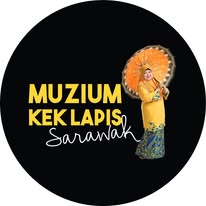
MIRI, Oct 3: Behind the meticulously arranged layers and striking motifs that have become its signature, Sarawak layer cake — or kek lapis — is far more than a traditional dessert. It is a symbol of pride for the people of Bumi Kenyalang and a sweet cultural bridge to those in Peninsular Malaysia.
Its visual appeal and rich flavours have made it a must-buy for travellers; many believe no trip to culturally diverse Sarawak is complete without bringing home a slice of this iconic treat — one that once captured the attention of celebrity judge Paul Hollywood on The Great British Baking Show.
What few realise, however, is the painstaking craftsmanship behind each cake — a process that demands patience, precision and mastery of traditional techniques. That very complexity inspired a Sarawakian to establish the Galeri dan Muzium Kek Lapis Sarawak Siti Payung, the only one of its kind in the state.
Housed in a modest building at Awalk Commercial Centre on Airport Road, the gallery and museum has been open to the public, free of charge, since 2019. It stands as the passion project of 40-year-old Mohammad Hafidz Rohani, whose mission is to elevate kek lapis as a world-class culinary heritage and ensure its legacy endures.
The managing director of Lana Corporation Sdn Bhd said the idea took root after he participated in the Alibaba Netpreneur Programme at Alibaba Business School in Hangzhou, China — an experience that opened his eyes to the importance of documenting business heritage.
Mohammad Hafidz began selling traditional Sarawak layer cakes in 2009 under the brand Kek Lapis Sarawak Siti Payung. The father of four said the exposure he gained in China in 2018 inspired him to champion the country’s culinary heritage.
“There are many examples we can look to. In France, there are museums dedicated to cheese. In Melaka, there is the Honey Gallery that tells the story and benefits of bees. In Petaling Jaya, there is even a chocolate museum that attracts tourists.
“All these show that local products are not merely commodities — they hold artistic, cultural and historical value. They can serve as centres of knowledge and tourist destinations,” he told Bernama.
Spanning about 1,800 sq ft, the gallery and museum offers more than just a walk through the history and identity of Sarawak layer cakes. Visitors can try their hand at making a kek lapis themselves and even dress up in traditional Sarawak attire.
With its interactive, meaningful and culturally rich experiences, the gallery aligns with Mohammad Hafidz’s hope of bringing especially younger generations closer to this culinary legacy.
“Visitors can see for themselves the evolution of Sarawak’s layer cake — how it started, the early pioneers, the creation of its unique patterns, and how the industry has grown into a Sarawak icon. It’s also a space to document the heritage for future generations,” he explained.
The gallery showcases a variety of cakes with distinctive designs and themes, while the museum traces the evolution of their production, including the traditional tools used in earlier days.
One of the most treasured exhibits is a handwritten recipe book belonging to his 74-year-old mother, Siti Jaharah Matassan. The book represents the family’s beginnings in the culinary arts before the business evolved into the Siti Payung brand.
“People are amazed to see how a successful business can begin with a mother’s simple recipe notes. It becomes a symbol of love and family spirit — it reminds them of their own mothers’ recipes,” said Mohammad Hafidz, who now employs nearly 20 staff.
Today, Siti Payung produces 39 varieties of kek lapis, from classics like Masam Manis and Betawi — favourites among tourists — to uniquely patterned roll cakes such as Cadbury, Oreo and Mint, which set the brand apart from others.
When asked about future plans, Mohammad Hafidz hopes to modernise the museum with new technologies such as LED displays and artificial intelligence-based interactive features to create a more immersive experience.
“I also hope to expand the museum to cater to more visitors, with a vision of turning it not only into a Miri icon but also an international gastronomic reference centre,” he said, adding that schools around Miri have already made it a destination for educational visits.
— BERNAMA
Does your business establishment have a unique story to tell? Let Weekly Echo help you shine. As a for-profit news organisation committed to sustainable journalism, we spotlight stories that shape the future business landscape.
Reach out to us at 012-2037137 or email weeklyecho2021@gmail.com to start the conversation.